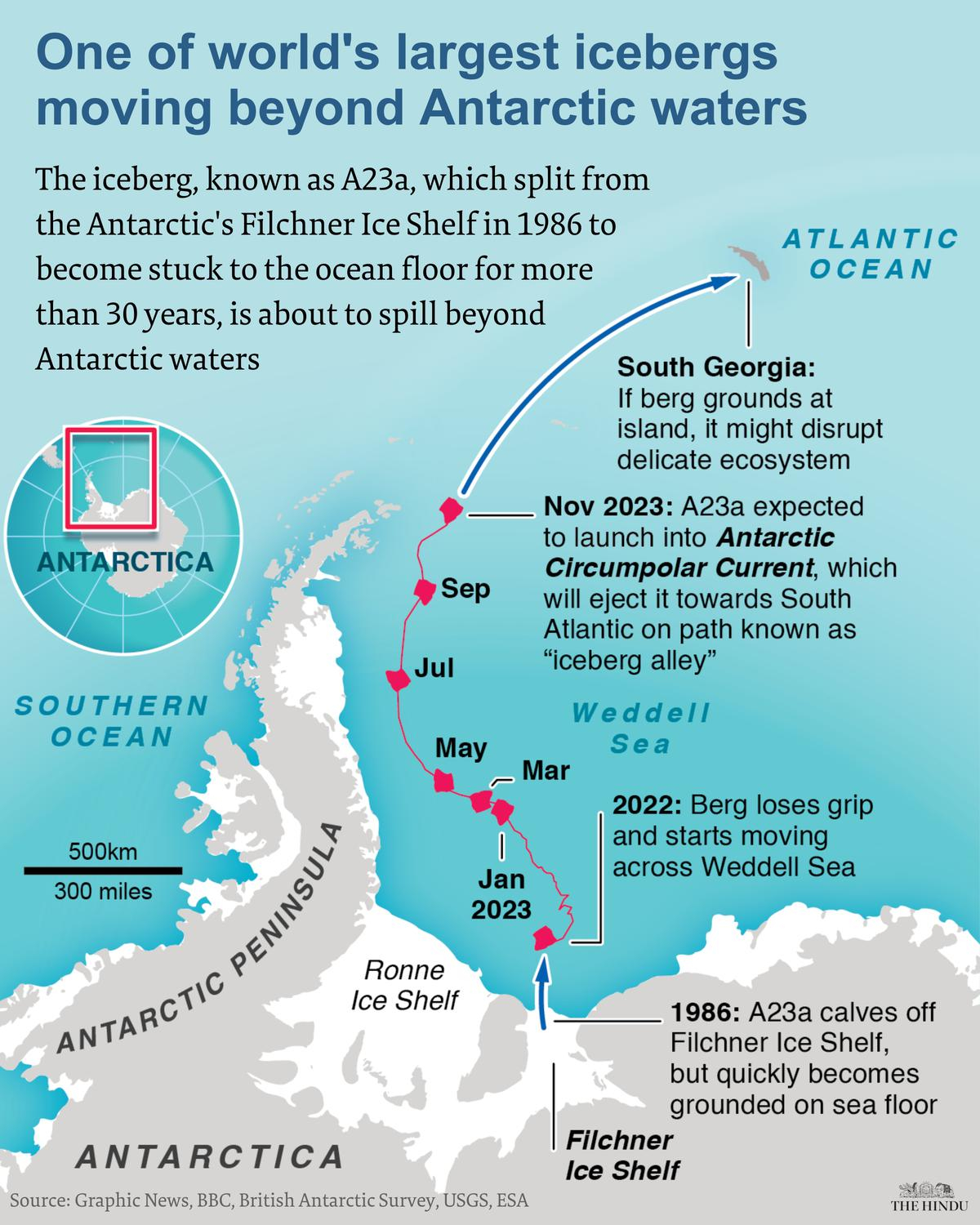Note4Students
From UPSC perspective, the following things are important :
Prelims level: A23a Iceberg

Why in the News?
- A23a, the world’s largest iceberg, has recently started spinning in place after drifting away from Antarctica in 2020.
-
- Now it is near South Orkney Islands, about northeast of the Antarctic Peninsula.
What is A23a?
- A23a is an iceberg, about 3,855 square kilometers in area, which is 5 times the size of New York City.
- It was originally part of an even larger iceberg called A23.
- It broke off from the Filchner Ice Shelf in Antarctica in 1986.
What is happening with A23a?
- It is now trapped over a seamount, and is spinning slowly in place.
- It is completing a full spin approximately in 24 days.
- Reason behind the spinning: Icebergs spin in Iceberg Alley because they get pulled by the strong Antarctic Circumpolar Current, moving into warmer waters where they melt.
Implications
- A23a’s melting does not contribute to global sea level rise since it is already floating.
- Its extended stay in this vortex could impact marine life in the area, especially plankton and other organisms in the food chain.
- The situation also provides a unique opportunity for scientists to study how such large icebergs behave in the ocean.
PYQ:[2021] With reference to the water on the planet Earth, consider the following statements: 1. The amount of water in the rivers and lakes is more than the amount of groundwater. 2. The amount of water in polar ice caps and glaciers is more than the amount of groundwater. Which of the statements given above is/are correct? (a) 1 only (b) 2 only (c) Both 1 and 2 (d) Neither 1 nor 2
[2021] How do the melting of the Arctic ice and glaciers of the Antarctic differently affect the weather patterns and human activities on the Earth? Explain. |
Get an IAS/IPS ranker as your 1: 1 personal mentor for UPSC 2024
